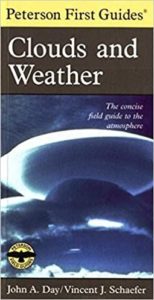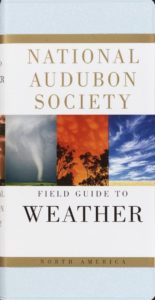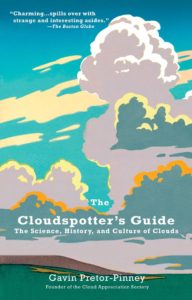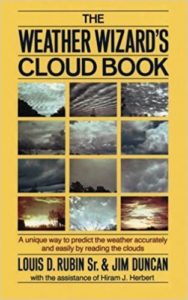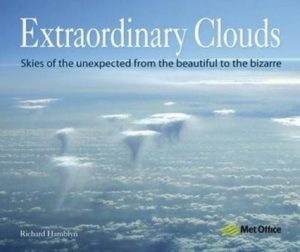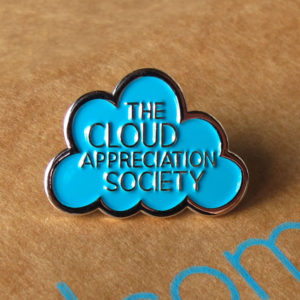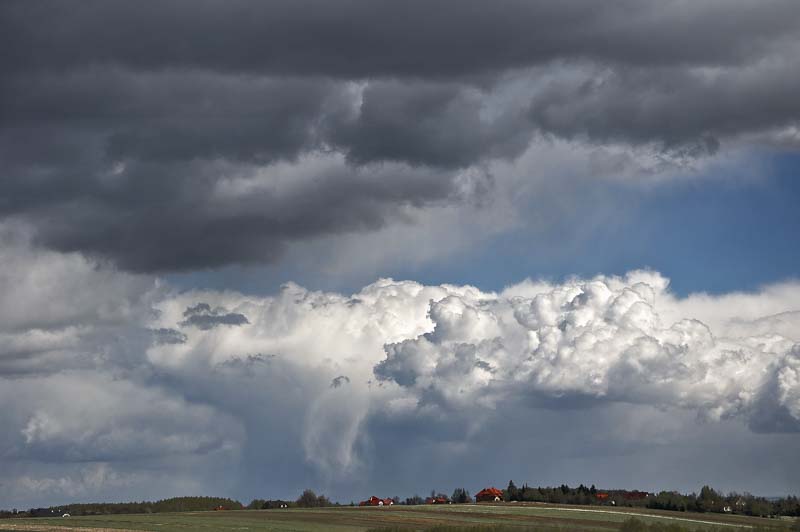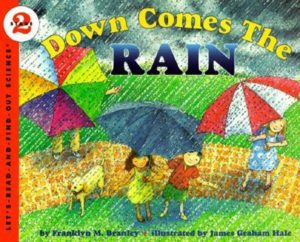 |
Franklyn M. Branley’s Down Comes the Rain (HarperCollins, 1997), one of the Let’s-Read-and-Find-Out Science series, is an appealing picture-book overview of the water cycle. Readers learn all about evaporation, condensation, cloud formation, and precipitation. For ages 4-8. |
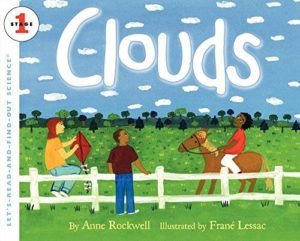 |
Anne Rockwell’s Clouds (HarperCollins, 2008), one of the Let’s-Read-and-Find-Out Science series, is a simple introduction to the different kinds of clouds and how they help us predict the weather. Included are instructions for making a cloud in a jar. For ages 4-8. |
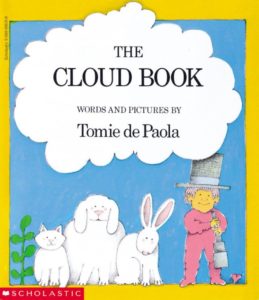 |
Tomie dePaola’s The Cloud Book (Holiday House, 1984) covers ten different kinds of clouds (“Cumulus clouds are puffy and look like cauliflowers”), cloud mythology and traditional sayings, and ends with a short and silly cloud story. The illustrations are delightful. For ages 4-7. |
|
Scholastic’s The Cloud Book Teaching Plan has several science activities to accompany de Paola’s The Cloud Book, among them making a cloud in a jar and a model water cycle, collecting and graphing rainfall data, and measuring the size of raindrops. |
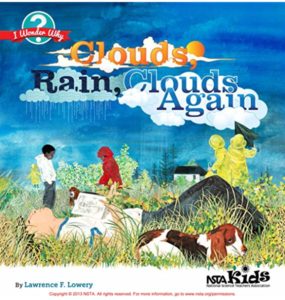 |
Lawrence Lowery’s Cloud, Rain, Clouds Again (NSTA Press, 2013), one of the I Wonder Why series, is a picture-book introduction to the water cycle with an included activity handbook. For ages 5-8. |
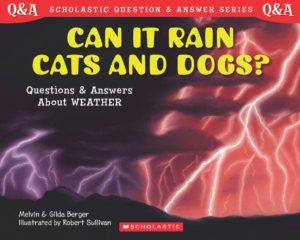 |
Melvin Berger and Gilda Berger’s Can It Rain Cats and Dogs? (Scholastic, 1999), written in interactive question-and-answer format, is an overview of weather divided into three main sections: Sun, Air, and Wind; Rain, Snow, and Hail; and Wild Weather. An interesting interactive read for ages 5-9. |
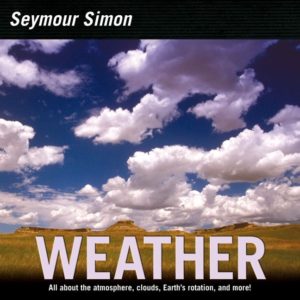 |
Seymour Simon’s Weather (HarperCollins, 2006), illustrated with gorgeous full-page color photographs, is an overview of the causes and effects of the world’s weather for ages 6-12. |
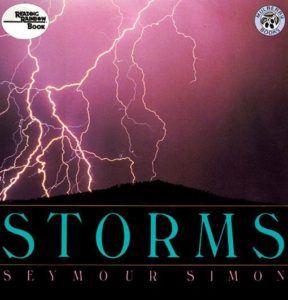 |
Seymour Simon has several other excellent weather-related books in the same format, among them Storms, Hurricanes, Tornadoes, and Lightning. |
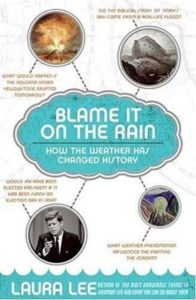 |
Laura Lee’s Blame It on the Rain: How the Weather Has Changed History (William Morrow, 2006) is a fascinating and reader-friendly overview of the historical impact of weather, with such chapters as “Greenland’s Vikings,” “Gee, It’s Cold in Russia,” “Washington and Weather,” and “Rain Ruins Robespierre.” For ages 12 and up. |
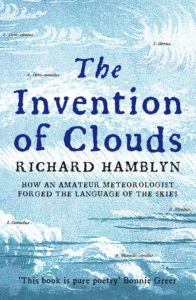 |
Richard Hamblyn’s The Invention of Clouds (Picador, 2002) is the story of Luke Howard, the early-19th-century amateur meteorologist who came up with the cloud classification and naming system that we still use today. For teenagers and adults. |









